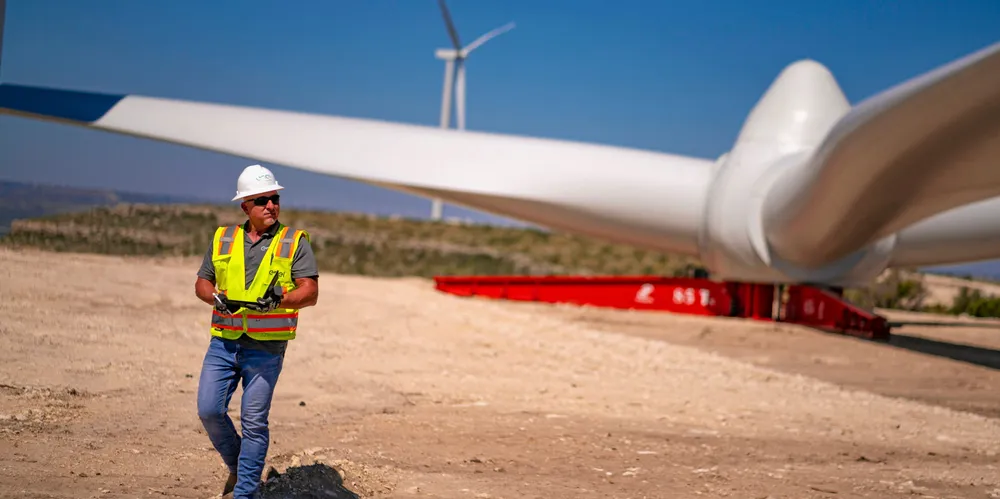Enel faces huge bill to dismantle 84-turbine wind farm as US judge backs tribal nation
After 12-year legal saga over Oklahoma project, judge rules in favour of Osage Nation

A federal judge in Oklahoma has ordered Enel Green Power North America to remove an 84-turbine, 150MW wind farm from tribal land and set a trial for monetary damages for its failure to acquire a project mining lease from the Osage Nation.
The 20 December ruling by Judge Jennifer Choe-Groves of the US District Court for the Northern District of Oklahoma culminates 12 years of back-and-forth litigation that pitted the tribe and later the federal government against Enel and two affiliates, Enel Kansas LLC, and Osage Wind LLC.
The legal dispute is among the longest-running involving onshore wind since the US industry began reaching commercial-scale four decades ago.
The ruling grants the tribe through its Minerals Council and United States permanent injunctive relief through “ejectment of the wind turbine farm for continuing trespass.” The US Department of Interior administers the Osage Nation’s mineral rights.
At issue is whether the developers required a lease from Osage Nation, a federally recognised tribal nation, for the “mineral estate” covering 8,400 acres (3,400 ha) affected by wind farm construction that began in 2013. It came fully online in 2015.
The Osage Nation contends that permitting the turbines to remain in place will cause it to suffer irreparable harm to its sovereignty and its authority to manage the mineral estate through the Minerals Council.
The developers said no in the belief that a lease agreement for the mineral estate was not required since disruption of that estate was minimal for placement of turbines, after mining sand, soil, and rock, and crushing rock for use as backfill to build the cement foundations.
'No lease'
“On the record before the Court, it is clear the Defendants are actively avoiding the leasing requirement,” she said, holding that allowing such behaviour would create the prospect for future interference with the Mineral Council’s authority by them or others wishing to develop the mineral lease.
“The Court concludes that Defendants’ past and continued refusal to obtain a lease constitutes interference with the sovereignty of the Osage Nation and is sufficient to constitute irreparable injury,” she said.
Enel in its legal filings claimed ejectment of the wind farm would cause the project to suffer irreversible financial harm and loss of revenue for two local schools, jobs, income for the surface estate owners, and renewable energy for 50,000 homes.
Earlier reports of the legal saga have included claims attributed to Enel that removal could cost as much as $300m.
Choe-Groves held that, "Even if negative effects were to result, including the significant monetary impact of hundreds of millions of dollars, such effects would not negate the public interest in private entities abiding by the law and respecting government sovereignty and the decision of courts.”
She added: “Nor would those negative effects overshadow the public interest in preserving the Osage Nation's tribal sovereignty.”
What's next?
The industry is closely following the case for several reasons. Enel Green Power North America is a major clean power owner in the US, ranking fourth behind NextEra Energy, Berkshire Hathaway, and Iberdrola-controlled Avangrid, with about 5.4GW of wind power capacity last 30 June.
Litigation that results in dismantlement of a large operating utility-scale and relatively new wind farm would set a precedent in the US and could encourage growing rural opposition to wind energy and related interstate electric transmission projects in parts of the country.
While the Osage Nation case has some very specific aspects such as sub-surface property interests that don’t have general applicability for the industry, it is a yellow flag for wind project developers, according to Jeffrey R. Porter, chair of environmental law practice at Mintz law firm in Boston.
Porter, who is not involved in the case, said the most likely result of the judge’s decision is a settlement that addresses the plaintiff’s claims of redress by monetary damages against Enel and those Choe-Groves said are only addressable by removal of turbines.
“I will be shocked if it actually ends up being the case that these 84 turbines are removed,” he said.
As it took years, not months, to design and develop the project, “the idea that all that is going to be undone seems much less likely to me than that the judge through her decision has significantly increased leverage of the Osage Nation in the negotiation, which in my view is inevitable,” he said.
Enel could appeal but such a move may be premature. An appeal now would be related only to removal of turbines, given the judge found a trial necessary to determine monetary damages from the developers’ failure to obtain a mineral estate lease. The Court of Appeals may or may not say this is the right time for its consideration before the entire case has been determined.
“I have to believe a more effective solution would be the sort of negotiation I’m talking about,” said Porter.
“There is no possibility at this point of reaching a comprehensive resolution by the Appeals Court,” he said, noting the only way to get such a resolution “is by the parties agreeing to one.”
Despite the adverse outcome in the wind farm case, Enel is showing no signs of backing off from its $1bn investment in a solar cell and panel manufacturing facility in eastern Oklahoma, which it announced in May last year.
(Copyright)